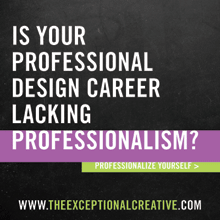
When I went to the Typophile Film Festival a couple weeks ago I was reminded how much I don't know about type. I might be a type nerd, but there's lots more nerdiness to be had. Like what exactly is the difference between a typeface and a font? Many designers use them interchangably. Or, like me, once they learn the word 'typeface' they use it in place of 'font' because it sounds so much more designer-y. When I realized that I had never taken the time to research the technical difference, I was so embarrassed. Gasp! Have I been using the wrong terms all this time? Let's see...
Back in the olden-days all of this would make more sense. Then, when they printed something they had to use little blocks of metal or wood that obviously could only one point size. And this was called a font - a complete set of characters in a specific size and weight of a typeface. Now, fonts are size-independent as we've all become digital typesetters (whether it's in Word, InDesign, or some other desktop publishing software). But a font can still be defined as "a complete character set of a single style of a particular typeface" (Wikipedia). Even if that character set is just digitally represented and you don't happen to have all of the hand-carved character blocks on hand.
If you want to get really intense, you can think of fonts as "the things that enable the printing of typeface" (Allan Haley for AIGA). This means the font is literally the set of wooden blocks...not just the characters and words they create. (If you're following, think about this: now-a-days a font can also be specified by it's format: TrueType, PostScript, etc.).
Typefaces come from type designers. Fonts come from foundries.
Foundries provide us with several fonts for each typeface. If the typeface is Futura, these fonts might include: Light, Medium, Bold, Bold Oblique, Light Oblique, Medium Oblique, Demibold, and Demibold Oblique...the list goes on and on. Paul Renner designed the typeface. Bauer Type Foundry and Neufville Digital were the foundries commissioned to produce the fonts.
Typefaces are created. Fonts are produced.
I'm planning on minding my typefaces and fonts from now on. Here are a few great real-life applications of our chosen vocab words from www.inspirationbit.com:
- What typeface was used for Star Wars logo?
- Can you email me the font used for Aliens poster?
- Which typefaces are web-safe?
- What font size should I use when highlighting the captions?
Most content derived from these sources: The FontFeed and AIGA




No comments:
Post a Comment